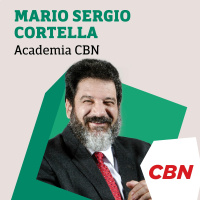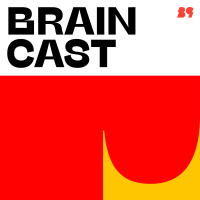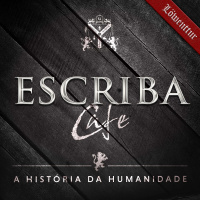Synopsis
Podcast by CORE Education
Episodes
-
Marine Reserves Kapiti Podcast 2 of 3
08/11/2022 Duration: 33minThe following questions from schools are answered by Ben from Sustainable Coastlines: 1. What is citizen science? 2. If we see someone breaking the rules of a Marine Reserve, what should we do? 3. Can we as kids make a real difference when commercial fishing has such an impact and also other countries aren’t as careful with plastic as we are in nz 4. How long do whales usually live for? Are there any around Kāpiti? 5. When did the Kāpiti marine reserve open? 6. What is the rarest fish found so far at Kāpiti? 7. Is the habitat of Kāpiti Marine Reserve typical of most of the rest of NZ?
-
Marine Reserves Kapiti Podcast 1 of 3
08/11/2022 Duration: 30minThe following questions from schools are answered by Ben from Sustainable Coastlines: 1. Is Kapiti Island like the mainland used to be, in terms of birds and animals? 2. When and where was NZ's first Marine Reserve established? 3. How many species of animals are there on the island ? 4. How many species of endangered birds are there? 5. Do they ship fish into the marine reserve or do you attract them in another way? 6. Where is the safest place for birds to go? 7. Why do you have more fish than at Tapu Te Range? 8. Are there other species like sharks in a reserve or do you protect them? 9. What is the view like from the hutt? 10. How do animals eat a range of foods when they live on an island? 11. How big are the great whites?? 12. Is it rare to see dolphins? 13. Are there native snails on Kapiti Island? 14. So Kapiti has operators who are doing eco-tourism sustainably?
-
LEARNZ Natural Hazards Taupō Supervolcano Podcast 3 of 3
07/11/2022 Duration: 45minThe following questions from schools are answered by volcanologists and an iwi-based researcher: 1. We saw a GNS video on measuring sulfate and chloride ions in the crater lake. Do geologists measure these in Lake Taupō to track activity? 2. How can we tell if a supervolcano is in a building phase, “potentially culminating, at some undetermined point in the future, in a large-scale eruption again in New Zealand"? 3. Yellowstone is a famous supervolcano, is it more likely to erupt again before Lake Taupō caldera? 4. Are all supervolcanoes rhyolite calderas? 5. Does new pumice get generated without an eruption? It always seems to be floating on the lake. 6. Could we get a supervolcano in Auckland? 7. There is a geothermal electricity station near Taupō. Why don't we have any at Tongariro or Rotorua?
-
LEARNZ Natural Hazards Taupō Supervolcano Podcast 2 of 3
07/11/2022 Duration: 44minThe following questions from schools are answered by volcanologists and an iwi-based researcher: 1. How many people would be involved in the monitoring (watching or studying) of the volcanoes in New Zealand? 2. Does ash freeze if it is too high in the atmosphere? 3. What technology do you think will be available in 50 year's time to monitor volcanoes to keep people and animals even safer? 4. How did water fill up the caldera? 5. Can you cook a meal in the hot pools at the top of the volcano? 6. How hot is the magma in the chamber under Taupō? 7. What would New Zealand’s most active or dangerous volcano be? 8. Do other countries study our volcanoes. If so why? 9. How do geologists measure when a supervolcano is going to erupt?
-
LEARNZ Natural Hazards Taupō Supervolcano Podcast 1 of 3
07/11/2022 Duration: 35minThe following questions from schools are answered by volcanologists and an iwi-based researcher: 1. How is a supervolcano formed? 2. What causes a supervolcano to erupt and how much damage can that cause? 3. What makes tectonic plates move? 4. How does a pyroclastic flow stop? 5. How can the Taupō supervolcano help us to understand volcanoes better? 6. How do humans live with supervolcanoes? 7. Could humans cause a supervolcano to erupt? Why/why not?
-
LEARNZ Heritage Podcast 2 of 2
02/11/2022 Duration: 29minThe following questions from schools were answered by Millie from Pouhere Taonga Heritage New Zealand: 1. Is the person that built the Stone Store related to you? If they are, what do you know about them? 2. What career pathway did you take to get this job? 3. When was the land discovered and settled by Māori and Europeans? 4. What was the population at the height of Māori and European settlement? 5. When you talk about 'priceless artifacts', what do you mean? 6. Is it the same people who built Stone Store the same as the ones who built the Kemp House? 7. What is the most interesting and or unusual artifact that you have in the Stone Store museum? 8. Did the people who built the Stone Store or Kemp House leave a historical mark e.g. a hidden signature or piece of memorabilia under or behind something, other than the stone slate? 9. Why do the artifacts have to be behind glass? What do they do to preserve artifacts? 10. How do they strengthen old buildings to be earthquake proof and to meet today's safety sta
-
LEARNZ Heritage Podcast 1 of 2
02/11/2022 Duration: 22minThe following questions from schools were answered by Bill from Pouhere Taonga Heritage New Zealand: 1. What does the word "heritage" mean to you? 2. How do you put a value on heritage items? 3. What is your favourite "item" of your heritage that is physical? 4. What is your favourite "item" of your heritage that is intangible? 5. What do you think is our most important "item" of heritage, as a country? 5. If we want to find out more about our own heritage, where would you suggest we start? 6. What are the threats to heritage? 7. What are the benefits of preserving our heritage? 8. Do you think we in Aotearoa New Zealand are doing a good job preserving our heritage?
-
LEARNZ Sustainable Seas - Ohiwa Harbour Podcast 3 of 3
01/11/2022 Duration: 40minThe following questions from schools are answered by Marine Ecologist Leigh Tait: 1. Are there still problems and threats within our marine reserves? 2. Have there been any noticeable effects from climate change in and around the harbour? 3. How many fish, for example snapper, would be a sustainable recreational limit and should there also be a size limit for the big snapper, so fish bigger than 50cm also have to be let go? 4. If there were an increasing number of sharks in the harbour, would that be good or bad? 5. What new ideas do you have for how to protect marine areas, for example, should New Zealand have more marine reserves? 6. Are there mangroves within the harbour? What do they do within the ecosystem? 7. Our school is by the ocean on the Coromandel Peninsula and there are a lot of pine forests close by. What problems are caused in the ocean when the trees are cleared and then we have a lot of rain? 8. When it is low tide, do the ika stay in the harbour or do they move about with the tide? 9. The mu
-
LEARNZ Sustainable Seas - Ohiwa Harbour Podcast 2 of 3
01/11/2022 Duration: 25minThe following questions from schools are answered by Marine Researcher Dr Kura Paul-Burke 1. Is the Rena oil spill still affecting the wildlife in New Zealand? 2. We are more aware that plastic is polluting our oceans, is what we are doing making a difference? 3. Are there more whale standings happening and are we, as humans making that happen? 4. Where is the place whale strandings are happening the most and why do you think this is? 5. Which animal species do you notice the most is declining? 6. What evidence do you have that pollution is affecting the animals in New Zealand oceans? 7. How much of our oceans are still unexplored and how many species do you think there may be undiscovered? 8. Can you tell us more about sea weed, what it's made of and how important it is to the food chain? 9. How many species of fish are there around New Zealand? 10. Are boats affecting New Zealand's wildlife and if so how? 11. Do all the boats disturb the species in the harbour? 12. What is the most endangered sea species in
-
LEARNZ Sustainable Seas - Ohiwa Harbour Podcast 1 of 3
01/11/2022 Duration: 36minThe following questions from schools are answered by Marine Researcher Dr Kura Paul-Burke 1. What are some species that live in Ōhiwa Harbour? 2. Where does the fresh water that enters the harbour come from? 3. How do animals live in estuaries if they consist of salt and fresh water? 4. What are the non-living elements of the harbour ecosystem? 5. What are the producers, consumers, decomposers, and inorganic matter in the harbour? 6. How are humans harming the ecosystem? 7. What effect is nearby farming having? 8. What would happen if the mussels disappeared? 9. How can we prevent sedimentation? 10. What is the current health of Ōhiwa Harbour? 11. What are fiords? 12. How do we stop over-fishing? 13. Can you explain what sedimentation is? 14. What would happen without fish? 15. Is Ohiwa Harbour protected? 16. How many plastic bags are going into the ocean? 17. Do starfish help clean the ecosystem too? 18. If we recorded all of the connections for the marine ecosystems what would it look like? 19. How c
-
Problem Solving In The Real World By Students
26/10/2022 Duration: 07minJosh Hough and Karl Summerfield discuss examples of students solving real world problems using our programme, E Whiti! E Whiti!
-
LEARNZ Waste not Wasted: The science of waste at Kate Valley landfill Podcast 3 of 3
17/10/2022 Duration: 35minThe following questions are answered: 1. Once the landfill is covered with soil what happens? 2. Do you think New Zealanders are making a conscious effort to manage household/industry waste etc or is it getting worse because of the amount of rubbish that we have? 3. Why do you think so many restaurants and businesses still use and sell plastic products rather than reusing? 4. Do you think the advertisements like Gen Less will have an impact on the future for how much waste we produce? 5. What companies have been using environmentally friendly products and what impact does this have on the landfill? 6. Do you think people know that organic waste produces the most gas, and if they did, would people be more vigilant about putting this waste in the correct bins? 7. What are some other ideas that we can use to reduce the amount of waste and rubbish in New Zealand? 8. Do you think Kate Valley could use the methane catchments worldwide? Or did this idea come from somewhere overseas? 9. How does the amount of waste w
-
LEARNZ Waste not Wasted: The science of waste at Kate Valley landfill Podcast 2 of 3
17/10/2022 Duration: 36minThe following questions are answered: 1. What is the dirt like underneath the rubbish at the landfill? 2. What is the layer separating the rubbish from the ground made out of? 3. How does the rubbish at the landfill affect the natural environment around the landfill? 4. What can be done if water near a landfill gets leachate in it? 5. How do you bury the rubbish and how bad are the chemicals for the soil? 6. Why was plastic made? What will happen to all the plastic in 100 years? 7. How do you stop the rubbish contaminating the water table below the landfill? 8. How is there enough money to pay for the technology at Kate Valley? 9. How do you stop the rubbish blowing away from the landfill? 10. How much research has been conducted into landfills and their impact? 11. To what extent do you think old landfills pose a greater risk to the environment than modern engineered landfills like Kate Valley? Can anything be done to improve old landfills that have been closed down? 12. How is leachate created? Does i
-
LEARNZ Waste not Wasted: The science of waste at Kate Valley landfill Podcast 1 of 3
17/10/2022 Duration: 40minThe following questions are answered: 1. How was the Kate Valley Landfill created? 2. What is the difference between the Kate Valley landfill and other New Zealand landfills? 3. How much rubbish goes to the landfill a day? How much rubbish has gone into the Kate Valley landfill since it was first developed? 4. What do you do at Kate Valley to make sure that recyclable waste is not transferred to the landfill? 5. Where does all the waste go once it’s in the landfill - what does the waste do? 6. What types of waste can’t decompose and why? 7. Why does the rubbish give off toxic chemicals? 8. Is all the waste at Kate Valley completely contained? Can any of it escape into the environment? 9. Why can’t the rubbish be burnt in a massive oven and turn it into something else? 10. How long is Kate Valley going to last? What will happen to Kate Valley Landfill once it is full? 11. Why don’t we send out rubbish to countries like China to be incinerated? 12. How do you collect all the toxic gases and how do you know you
-
LEARNZ Our Primary Industries Unpacking The Apple Story podcast 3 of 3
10/10/2022 Duration: 40minThe following questions are answered: 1. Why are green apples sour? 2. How can you tell the difference between an apple tree and another tree when there are no apples on it? 3. How many varieties of apples are there in the world? 4. Apart from red and green apples, do apples come in any other colour? 5. How does the apple develop on the branch of a tree? 6. Do apples ripen after they are picked and how do apples stay ripe and not go off when exported overseas? 7. Can you tell us a little more about the countries that our New Zealand apples get exported to (can they not grow their own) and do they only travel by ship? 8. How are the growers going to manage global warming in the future? 9. How do you control the sugar levels in apples when breeding new varieties? 10. We have heard about the red-fleshed apple but would it be possible to produce a different coloured apple? 11. As a world-leading apple growing country with a great reputation, what biosecurity measures do we take to protect our apple industry
-
LEARNZ Our Primary Industries Unpacking The Apple Story podcast 2 of 3
10/10/2022 Duration: 45minThe following questions are answered: 1. How do you think this project (and this field trip) will change society? 2. How will this online trip help our learning? 3. How do you check for pests? 4. How successful are the pest control measures? 5. What is the most common apple disease? 6. How many trees are lost per year? 7. Tell us more about the robot apple picker. 8. How big do apples get? 9. What inspired you to start this programme? 10. We have heard that the robot picker detects red apples but cannot yet detect black spot. What happens if those apples get to the packhouse? 11. Do you have pollinators or your own bees? 12. Do you use a microscope? if so what for? 13. How long does an apple last after you pick it?
-
LEARNZ Our Primary Industries: Unpacking The Apple Story podcast 1 of 3
10/10/2022 Duration: 37minThe following questions are answered: 1. How did your business start and what sustainable practices do you have? 2. How do you choose your workers and how many do you have? 3. What are the main roles that staff have and what qualifications do they need? 4. How do you transport the apples so they don't get bru5. ised? 5. How long does it take for a seed to grow into a tree and then produce apples? 6. How do you stop possums and other pests from attacking or eating your trees? 7. What kind of growing conditions do apples need to grow and what climate do they need? 8. How do you set the sale price of your apples? 9. Does the Government assist you with subsidies to get your business up and running? 10. What varieties of apples do you have?
-
LEARNZ Natural Hazards Alpine Fault AF8 Podcast 3 of 3
06/10/2022 Duration: 29minThe following questions are answered: 1. What are the differences between a normal earthquake and an Alpine Fault earthquake? 2. Will a tsunami happen if the Alpine Fault ruptures? If so, will it be different to other tsunamis? How and why? 3. How do we prepare for a one in every 300 year event? 4. Tsunamis, floods and the White Island eruption are all natural disasters. How is preparing for an Alpine Fault earthquake different to preparing for these disasters? 5. Where would be a safe place during an Alpine Fault earthquake and how can we best be prepared for one? 6. What is the anticipated radius of damage from an AF8 rupture? 7. Would a rupture of the Alpine Fault affect the weather? Would it cause other earthquakes? 8. What do you wish New Zealanders would do to be prepared?
-
LEARNZ Natural Hazards Alpine Fault AF8 Podcast 2 of 3
06/10/2022 Duration: 32minThe following questions are answered: 1. We have watched animations of P waves and S waves and I was wondering what is the formula you use to measure the distance of an earthquake epicentre from a specific point? 2. With Scientists, Geologists and Seismologists: how do their jobs differ and how do they work together on earthquakes in New Zealand? 3. I have been to Franz Josef and I was wondering what would happen to the glacier when a large earthquake comes? 4. What depth have the earthquakes on the Alpine fault been and how have they affected the landscape at Franz Josef in the past? 5. Does the depth of the P and S waves and/or the depth of an earthquake affect the time it takes the shaking to reach a certain point? Please explain. 6. When you drill into the fault line, how far down do you go; what type of rocks are you looking for and what information do they give you? 7. As the tectonic plates rub together will they eventually break apart and wear down so that in the distant future we may not have earthqu
-
LEARNZ Natural Hazards Alpine Fault AF8 Podcast 1 of 3
06/10/2022 Duration: 37minThe following questions are answered: 1. When the Earth had Pangaea as one land mass, what was the rest of the Earth 'held together' with? (we're thinking about the fact that if all the plates started there, what was the rest of the Earth made up of? If it was plates too, did they merge or meld together? 2. What makes a continent a continent? 3. Have there been any eruptions along the Alpine Fault and do you believe there could be? 4. How do you measure the highest point along the fault? 5. Can tectonic plates meld / join together? 6. What is the biggest magnitude earthquake caused by movement along the Alpine Fault? 7. How is the age of the Earth measured? 8. What is the educational pathway and skills required to become a geologist? 9. Is there such a thing as an extinct volcano? 10. What is the oldest active volcano in New Zealand?
























